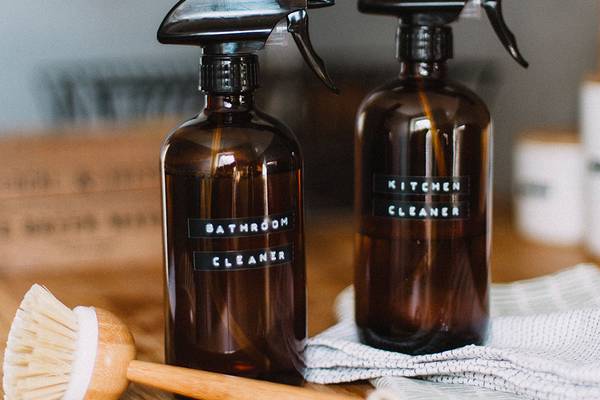
Keeping children healthy and safe at home is a priority for every parent. But have you considered the impact your cleaning products have on their health? Brimming with toxic ingredients, conventional cleaning products are just as bad for lungs as smoking 20 cigarettes a day, according to a new study in the American Journal of Respiratory and Critical Care Medicine. Children are more vulnerable to harmful ingredients since they’re still developing and can’t detoxify as well as adults. Conventional cleaners also pollute the earth and are often non-biodegradable and made from non-renewable resources like petroleum, which takes a toll on the earth’s ecosystems. Here’s how you can maintain a clean home while keeping your children healthy and protecting the environment in the process.
Avoid over-sanitizing
While it’s important to protect children from harmful bacteria, over-sanitizing your home can be detrimental to their health. Children need to be exposed to both negative and beneficial germs to build strong immune systems. Antibacterial cleaning products kill both types of bacteria — good and bad. Overusing antibacterial products also puts stress on children’s immune systems which struggle to detoxify the body from the influx of chemicals. So, only use antibacterial products when really necessary. Letting your children play in the dirt and cuddle with pets is a great way to exposure them to helpful bacteria. Studies also show babies who grow up with dogs as pets are less likely to develop asthma before the age of six.
Every year more microwave ovens are sold than any other type of oven in Europe with yearly sales expected to reach 135 million by the end of this decade. It is for this very reason that all efforts to reduce consumption should be focused on educating consumers on how to use appliances more efficiently and make better purchasing decisions.
Choose eco-friendly cleaning products
Switching out conventional chemical cleaners for eco-friendly ones can make your home safer for your children. There are several good natural cleaning products on the market, but you can also make your own. Instead of furniture polish, use a microfiber cloth which is an effective dust-catcher. Add a little olive oil if necessary. You can make an effective all-purpose cleaner by mixing four tablespoons of baking soda together with a quart of warm water. Baking soda is slightly abrasive which means it removes stains and dislodges dirt naturally. It’s also great for re-whitening grubby surfaces.
Beware of greenwashing
Many cleaning products label themselves “green”, “natural”, or “biodegradable” — but these terms are meaningless alone. Always check the ingredients yourself to see if the product is truly eco-friendly. In fact, 95% of green products have been found guilty of greenwashing: making false, unimportant, or unhelpful environmental claims. For example, ozone-depleting CFCs are illegal, yet some products are still labeled “CFC free” to lure consumers into purchasing them. You’re best off looking for specific details when attempting to verify a product’s eco-friendly status. For example, you know a product calling itself “biodegradable in one week” is more legitimate than one that’s simply “biodegradable” since most substances eventually start to decompose anyway.
Ultimately, switching to greener methods of cleaning will be better for your health, your children’s health, and the environment. Refusing to use conventional cleaning products will also improve the air quality in your home and reduce chance of allergic reaction in your family. Setting a good, eco-friendly example for your children will ensure they have a bright future ahead of them.
Writer: Sally Keys is a professional freelance writer with many years experience across many different areas. She made the move to freelancing from a stressful corporate job and loves the work-life balance it offers her. When not at work, Sally enjoys reading, hiking, spending time with her family and traveling as much as possible.
